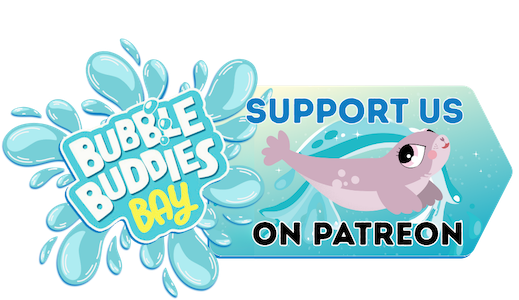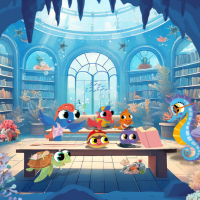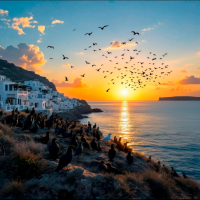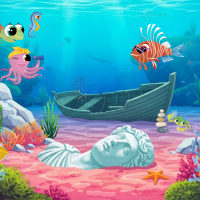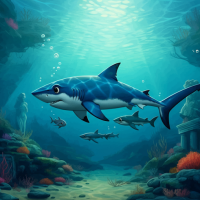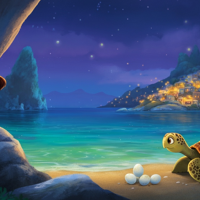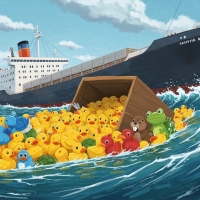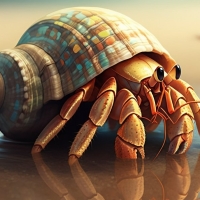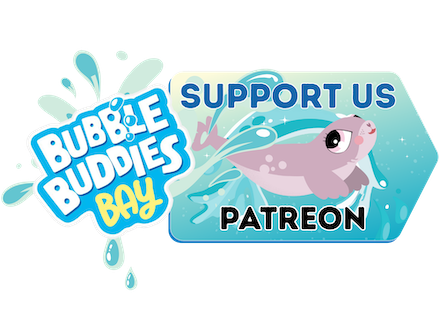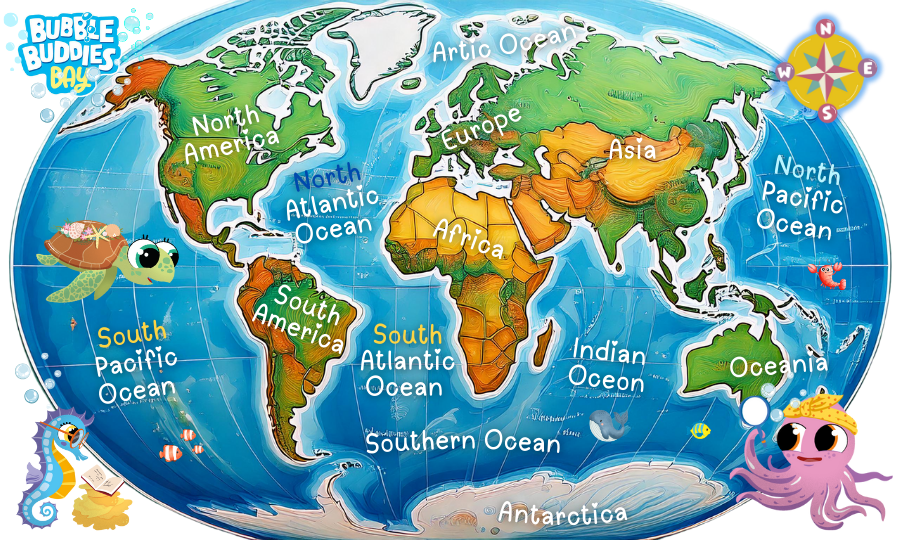
The Magnificent Ocean: A World of Wonder
- Sophia's Blog
- Hits: 5655
Hello! It's me, Sophia, wiggling in from the calm waters of Milos! I always dream of visiting other oceans, but they are big and I am little! But let's go on a special journey to discover how beautiful and important our ocean is.
When astronauts look at Earth from space, they see a giant “blue marble”. That's because over 70% of our planet is covered by ocean water! By the way, Okeanos was a sea-god in Ancient Greece. The ocean got its name from him.
![]()
One Giant Ocean, Many Names!
Even though all the water on Earth is connected, like one huge, continuous swimming pool, humans have decided that there are 5 different oceans. It's a bit strange, because there are no real walls or barriers between them like there are on land!
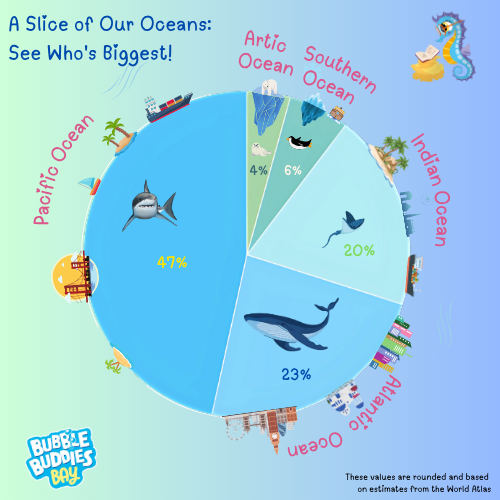
Let's dive into each one!
The Pacific Ocean is the true giant of our planet! It’s the largest and deepest. It covers over 30 % of Earth!
- The deepest spot on Earth, the Mariana Trench, is found here.
- A long time ago, a sailor named Magellan called it "Pacific" because he found a very peaceful spot, but don't let that fool you: the Pacific can also stir up some of the most ferocious typhoons and hurricanes on the planet!
- This ocean is also home to more than 25,000 islands!
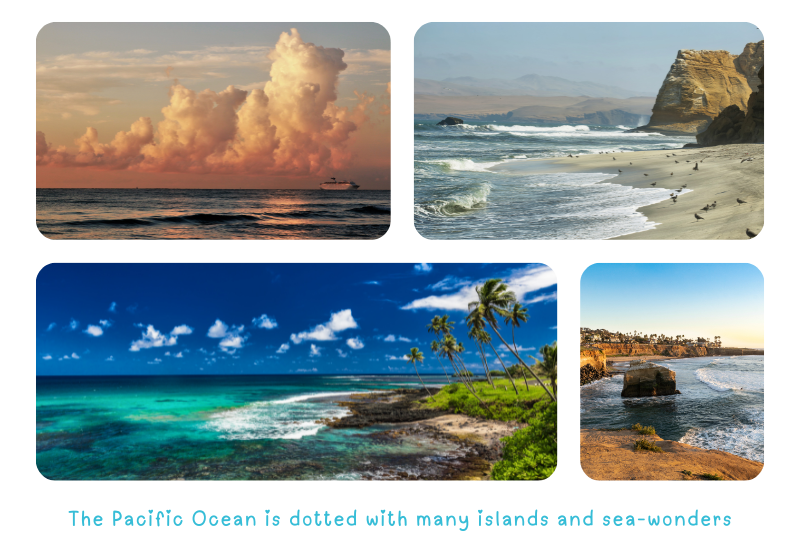
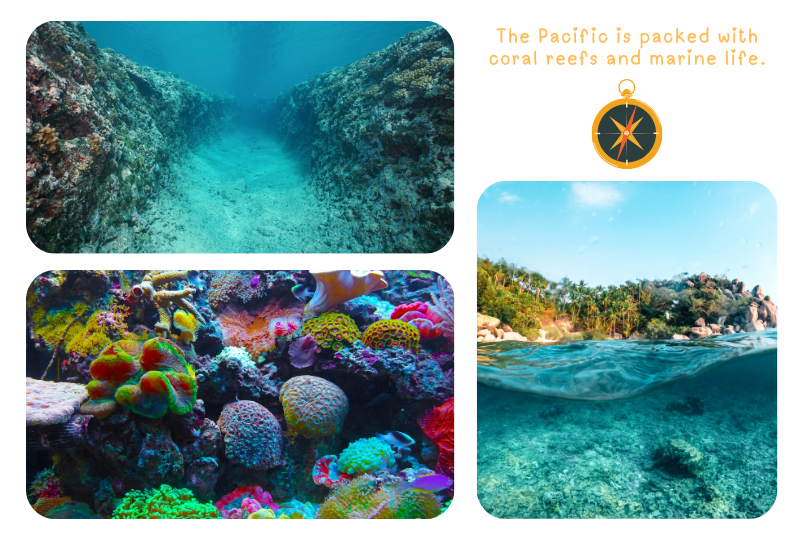
The Atlantic Ocean is the second largest.
- Its name comes from Greek mythology, meaning "Sea of Atlas"!
- It has a super cool "S" shape and is like a busy highway for ships.
- Humans even dug the Panama Canal to connect it directly to the Pacific!
- This ocean has a giant underwater mountain range called the Mid-Atlantic Ridge, stretching from Iceland almost to Antarctica, with mountains so tall their peaks poke out of the water to form islands!
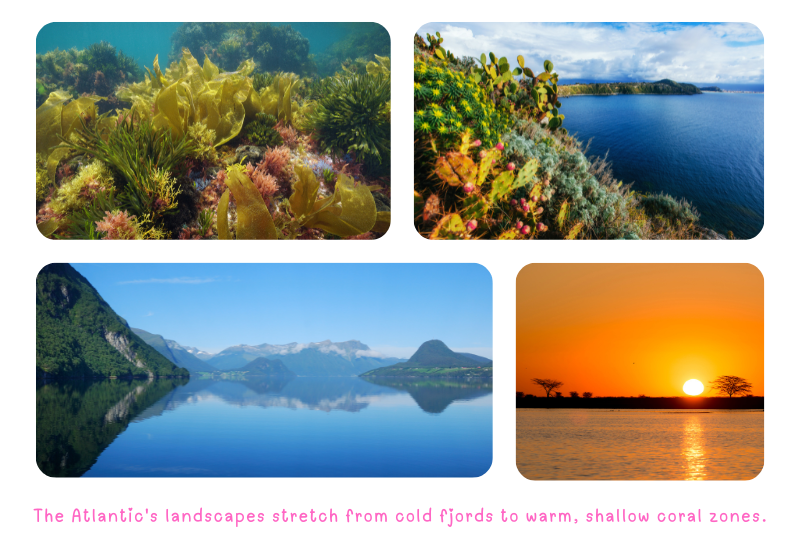
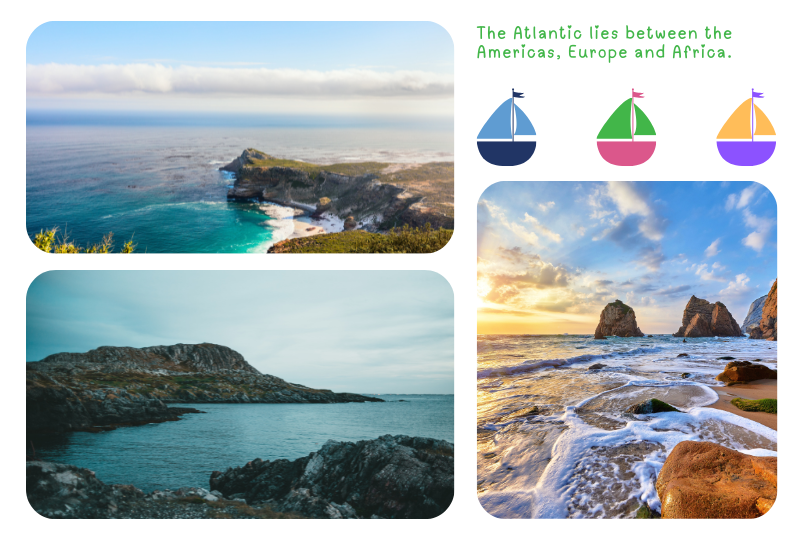
The Indian Ocean is our third-largest ocean.
- It's special because it's the only ocean enclosed on three sides by big continents!
- Because much of it is near the Equator, the Indian Ocean is the warmest ocean.
- Its currents are influenced by seasonal winds called monsoons, creating huge swirling movements in the water.
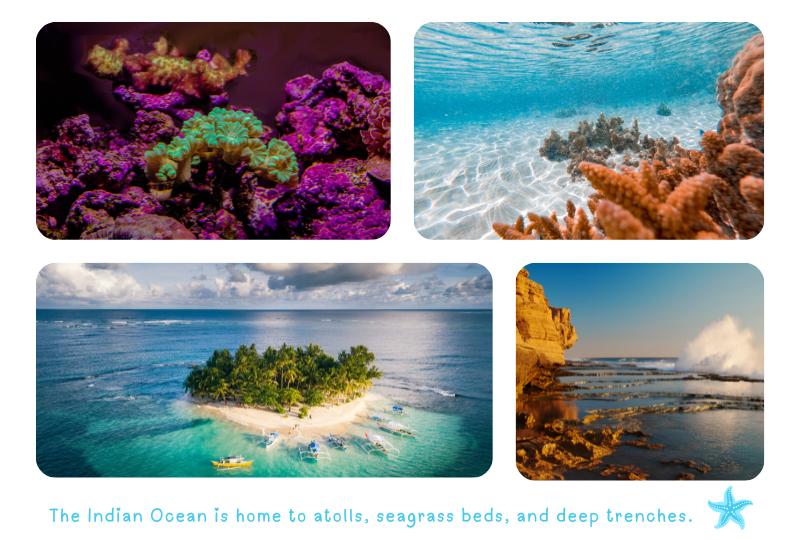
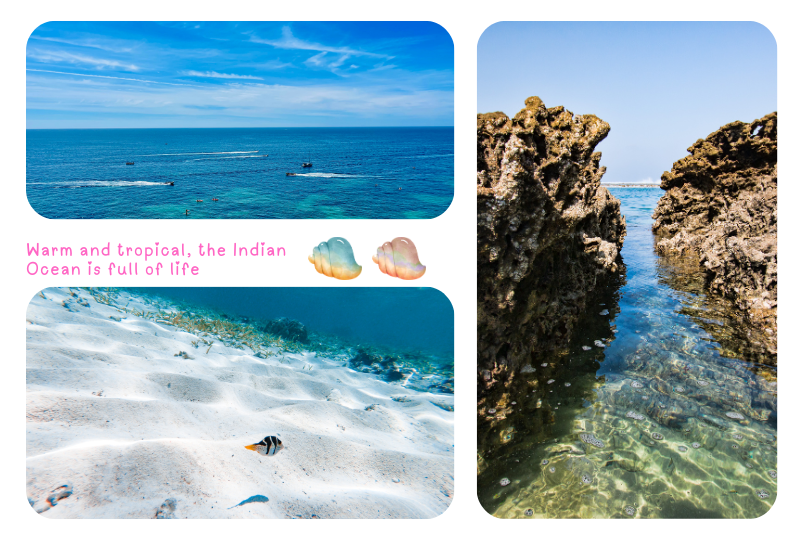
The Southern Ocean, which circles Antarctica, is the fourth largest
- It is the most recently recognised of our five oceans.
- What makes it super special is that, unlike most oceans, it’s separated from its neighbours not by land, but by the strongest current of the ocean, the Antarctic Circumpolar Current: it carries more water than 100 times the flow of all the rivers on Earth combined!
- This super current keeps the Southern Ocean very cold and icy, and it is home to amazing icebergs.
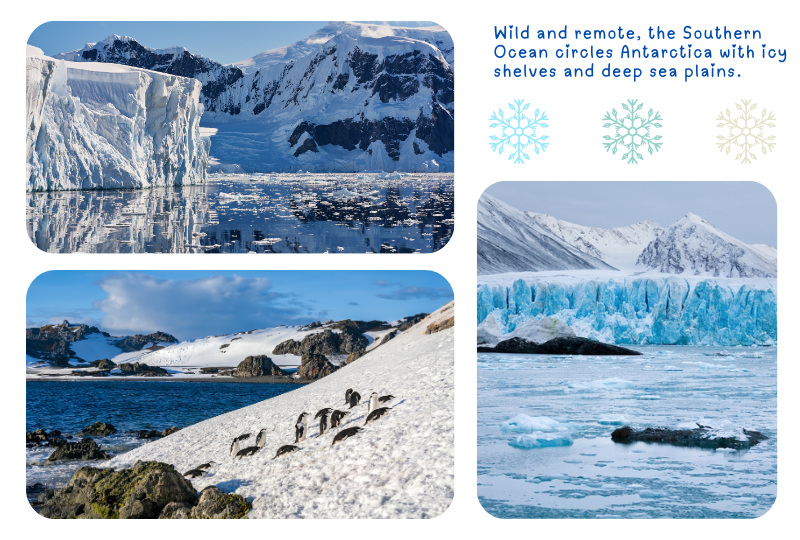
The Arctic Ocean is the smallest and shallowest of all the oceans.
- It's also the coldest ocean, mostly because a huge part of it stays covered in ice all year round (though this is changing a lot due to global warming!).
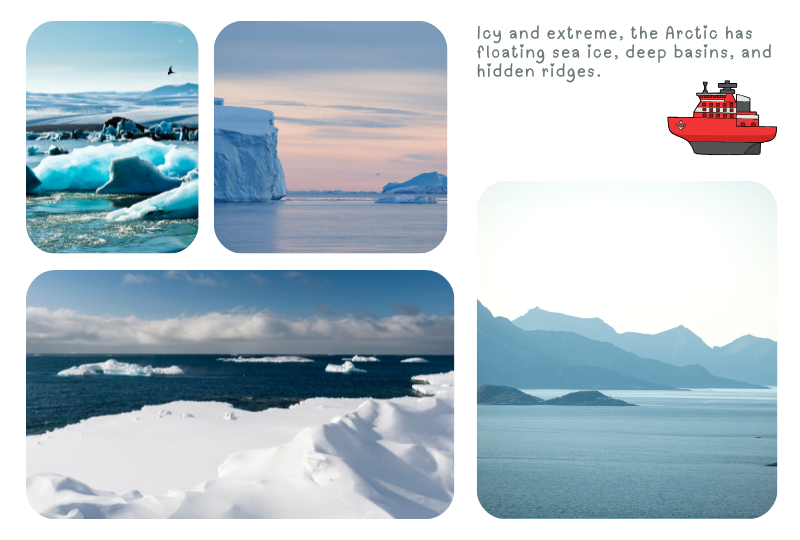
What is Hiding in Our Ocean?
Beneath the ocean’s sparkling surface lies a hidden world of towering mountains, deep canyons, swaying kelp forests, and wide, sandy plains. The ocean floor is sprinkled with tiny bits of sand and mud (like underwater dust) that settle gently over time.
Did you know scientists think there are many, many more kinds of sea creatures that we haven't even discovered yet? While the ocean covers most of our planet, a lot of the different types of life we know are actually found on land, but our ocean is still home to millions of amazing plants and animals! We know of tiny phytoplankton to giant kelp forests, seaweeds, and algae!
And get this: seawater contains loads of different minerals and chemicals! The oceans are also full of history, there are an estimated three million shipwrecks resting on the seabed, many holding secrets and treasures, like the famous Titanic! Perhaps we can talk about ancient cities hidden underwater another time too!
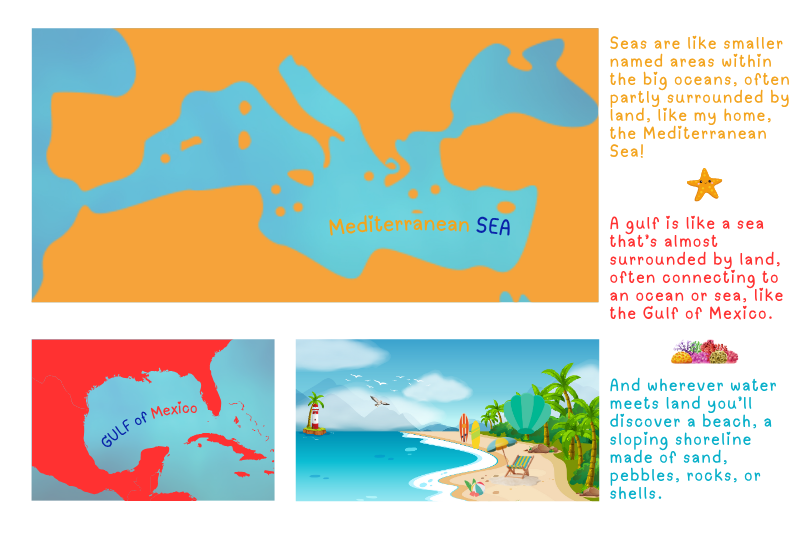
Why is the Ocean Salty?
Have you ever wondered why the sea is salty? It's a fun secret!
The main reason is that rain washes tiny mineral bits from the land into the water. These bits travel with rivers and streams all the way to the ocean, and over millions of years, they've built up!
Also, hidden underwater volcanoes and vents on the seabed can release more salty minerals into the ocean!
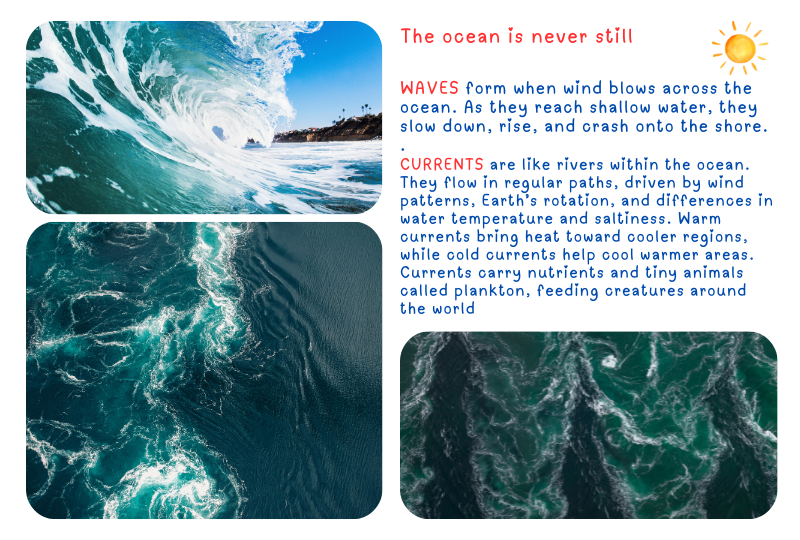
![]()
Our Ocean’s Superpowers & How You Can Help!
The ocean is not just beautiful; it has incredible superpowers that help our Earth in many ways:
- It gives us yummy food.
- It creates rain.
- It gives us the oxygen we breathe.
- And it even provides jobs for millions of people!
- It moves heat around the planet, keeping our climate in balance.
- It is home to millions of species.
But our amazing ocean needs heroes like you.
Things like pollution (plastic!), too much fishing, and changes in the climate (like warmer waters) are hurting our big blue home.
That’s why good people, around the world, are working hard to protect special underwater places and make sure sea life can thrive.
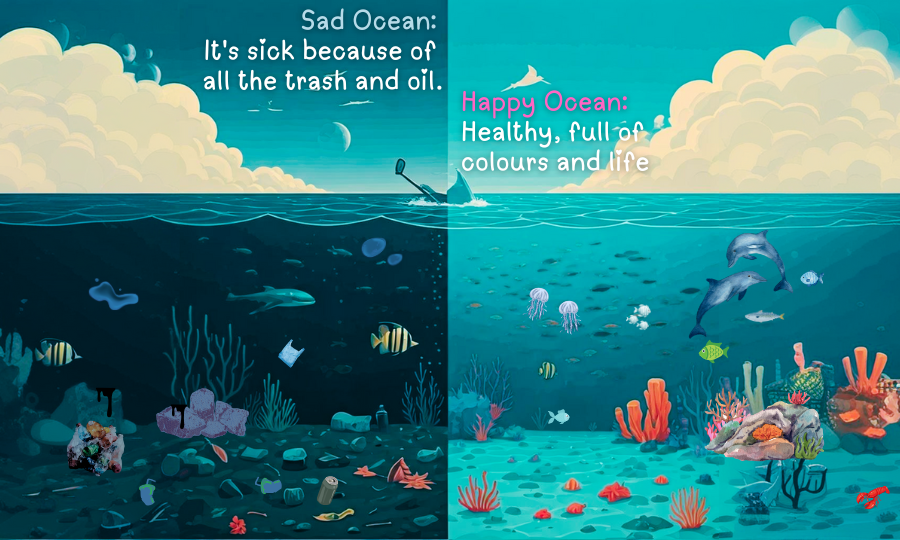
![]()
Be an Ocean Guardian! Fun Activities for Kids!
Want to help protect our incredible oceans and learn even more? Here are some fun ways you can dive into ocean protection and exploration:
⚓︎ Saltwater vs. Freshwater Experiment
What you need:
- Two clear glasses of water
- Salt
- A spoon
- Two eggs (or small grapes)
How to play:
- Fill both glasses with tap water.
- In one, stir in several spoonfuls of salt until it dissolves.
- Place an egg in each glass.
What happened? The egg in the saltwater floats more easily! This shows how salt affects how things float! (Remember to ask a grown-up for help!)
⚓︎ Ocean Currents Bottle Fun!
What you need:
- A clear plastic bottle with a lid
- Water
- A few drops of food colouring (blue or green)
- Glitter (optional)
How to play:
- Fill the bottle almost to the top with water.
- Add a few drops of food colouring and a sprinkle of glitter.
- Put the lid on tightly.
- Now tilt and swirl the bottle to watch your own "ocean currents" move the colour and glitter around!
This will help you imagine how real ocean currents move heat and things around the globe!
⚓︎ Drawing Challenge
What you need:
- Large paper
- Crayons
- Markers
- Coloured pencils.
How to play:
Remember how we talked about how little of the ocean floor we've mapped? Draw your own amazing, undiscovered part of the ocean!
- What does the seabed look like?
- What new, undiscovered creatures live there?
- What kinds of plants are growing?
Use your imagination to fill your underwater world!
⚓︎ Ocean Wave Makers Game
Players: 2 or more
What you need:
- A large tub, basin, or clear container of water
- Straws or fans
- Small floating objects (like toy boats)
How to Play:
- Fill a large container with water and place small floating items on the surface.
- Give each player a straw or mini hand fan.
- Players blow through their straws or wave their fans over the water to make waves.
- Challenge Rounds:
Mini Storm: Who can create the biggest wave without spilling?
Rescue Mission: Try to move a toy boat from one side to the other using only waves.
Obstacle Course: Set up tiny floating "islands" and try to steer waves around them.
⚓︎ Find the Big 5!
What you need:
- Our special Find the Big 5 map
- Colouring pencils or crayons
- Scissors (ask a grown-up for help!)
- Glue stick
What to do:
- First, print out your Find the Big 5 map.
- Look at the bottom of the page; you’ll see the names of the 5 oceans.
- With permission from a grown-up, cut out the names using scissors.
- Look at the map; there’s a little clue on each ocean to help you figure out where the labels go.
- Glue each name in the right place on the map.
- Now grab your colouring pencils and colour each ocean a different colour, any colours you like!
- If you want an extra challenge, write or draw some ocean animals you think live in each ocean!
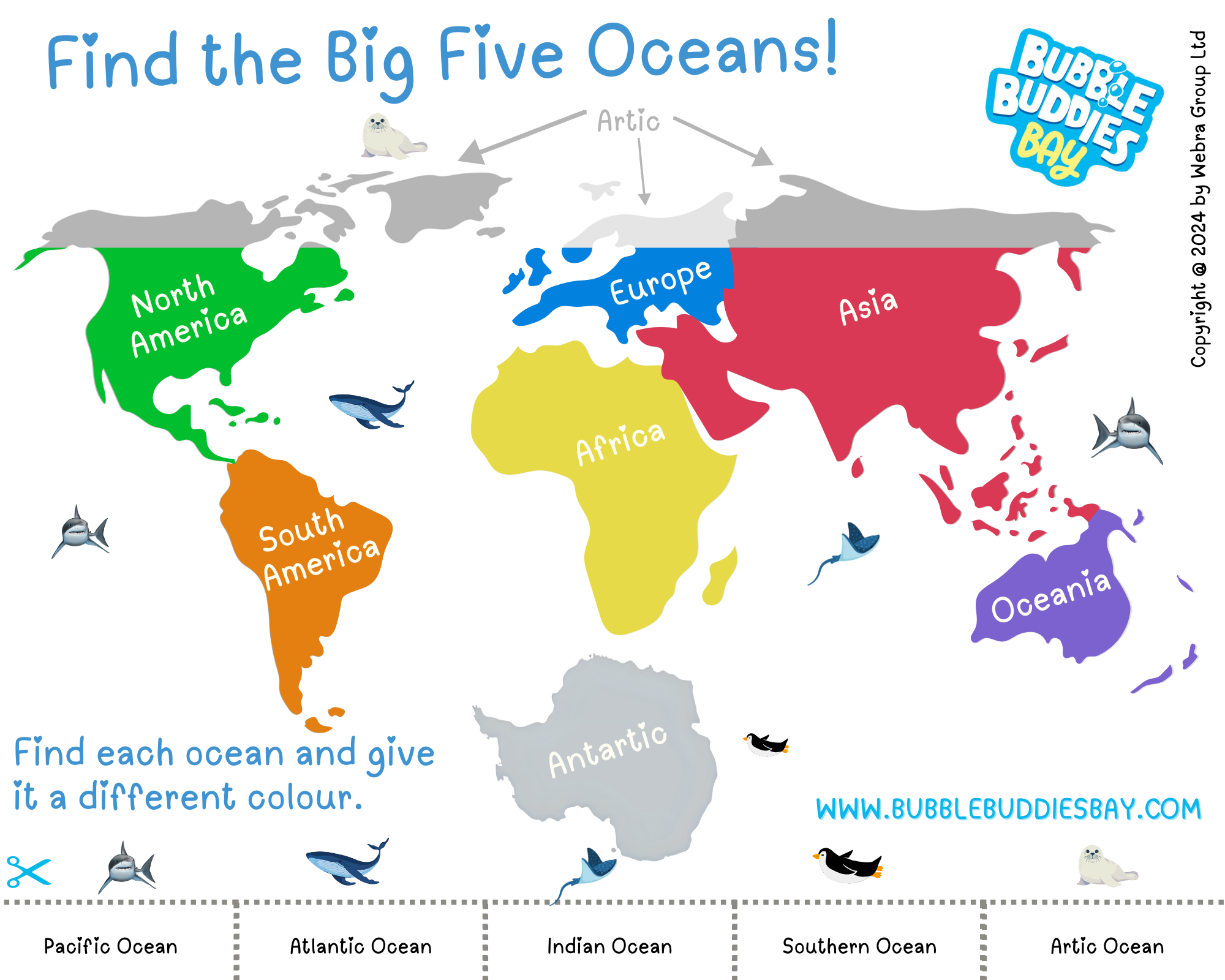
Let’s keep our Ocean Wonder alive, because it’s up to all of us to protect this beautiful blue world!
I’ll be back soon with more stories from the tide!
Sophia the Seahorse
